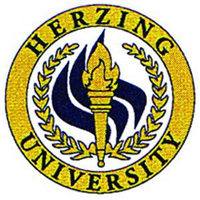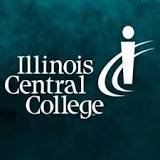What do they do?
Provide or assist with basic care or support under the direction of onsite licensed nursing staff. Perform duties such as monitoring of health status, feeding, bathing, dressing, grooming, toileting, or ambulation of patients in a health or nursing facility. May include medication administration and other health-related tasks. Includes nursing care attendants, nursing aides, and nursing attendants.
Also known as:
Certified Medication Aide (CMA), Certified Nurse Aide (CNA), Certified Nurses Aide (CNA), Certified Nursing Assistant (CNA), Certified Residential Medication Aide (CRMA), Geriatric Nursing Assistant (GNA), Licensed Nursing Assistant (LNA), Nurse Assistant, Nurses' Aide, Nursing Aide, Nursing Assistant, Patient Care Assistant (PCA), Patient Care Technician (PCT), State Tested Nursing Assistant (STNA)
-
0.2%
Change
Ranks #65 in job growth rate8,680Job Openings
Ranks #10 in net job growth
Looking for colleges that offer a specific major? Use the College Match Tool to find your best-matched schools and discover your estimated Net Price!
- High school diploma equivalent (38%)
- Some college, no degree (32%)
- Associate's degree (12%)
- Less than high school diploma (9%)
- Bachelor's degree (8%)
- Master's degree (1%)
- Doctorate or Professional Degree (1%)
People in this career often have these skills:
- Service Orientation - Actively looking for ways to help people.
- Active Listening - Giving full attention to what other people are saying, taking time to understand the points being made, asking questions as appropriate, and not interrupting at inappropriate times.
- Social Perceptiveness - Being aware of others' reactions and understanding why they react as they do.
People in this career often know a lot about:
- Customer and Personal Service - Knowledge of principles and processes for providing customer and personal services. This includes customer needs assessment, meeting quality standards for services, and evaluation of customer satisfaction.
- Administration and Management - Knowledge of business and management principles involved in strategic planning, resource allocation, human resources modeling, leadership technique, production methods, and coordination of people and resources.
People in this career often have talent in:
- Oral Comprehension - The ability to listen to and understand information and ideas presented through spoken words and sentences.
- Problem Sensitivity - The ability to tell when something is wrong or is likely to go wrong. It does not involve solving the problem, only recognizing that there is a problem.
- Oral Expression - The ability to communicate information and ideas in speaking so others will understand.
- Near Vision - The ability to see details at close range (within a few feet of the observer).
- Speech Recognition - The ability to identify and understand the speech of another person.
People in this career often do these activities:
- Adjust positions of patients on beds or tables.
- Feed patients.
- Hold patients to ensure proper positioning or safety.
- Record vital statistics or other health information.
- Assist patients with daily activities.
- Monitor patients to detect health problems.
- Analyze patient data to determine patient needs or treatment goals.
- Assess physical conditions of patients to aid in diagnosis or treatment.
- Dispose of biomedical waste in accordance with standards.
- Interview patients to gather medical information.
- Prepare medical instruments or equipment for use.
- Collect medical information from patients, family members, or other medical professionals.
- Clean patient rooms or patient treatment rooms.
- Administer therapy treatments to patients using hands or physical treatment aids.
- Stock medical or patient care supplies.
- Give medications or immunizations.
- Administer basic health care or medical treatments.
- Operate medical equipment.
- Assist practitioners to perform medical procedures.
- Apply bandages, dressings, or splints.
- Move patients to or from treatment areas.
- Collect biological specimens from patients.
- Explain technical medical information to patients.
- Transport biological or other medical materials.
- Provide basic information to guests, visitors, or clients.
This page includes data from:

 Occupation statistics: USDOL U.S. Bureau of Labor Statistics Occupational Employment Statistics
Occupation statistics: USDOL U.S. Bureau of Labor Statistics Occupational Employment Statistics













